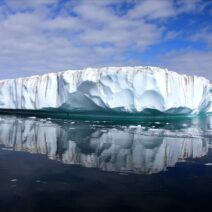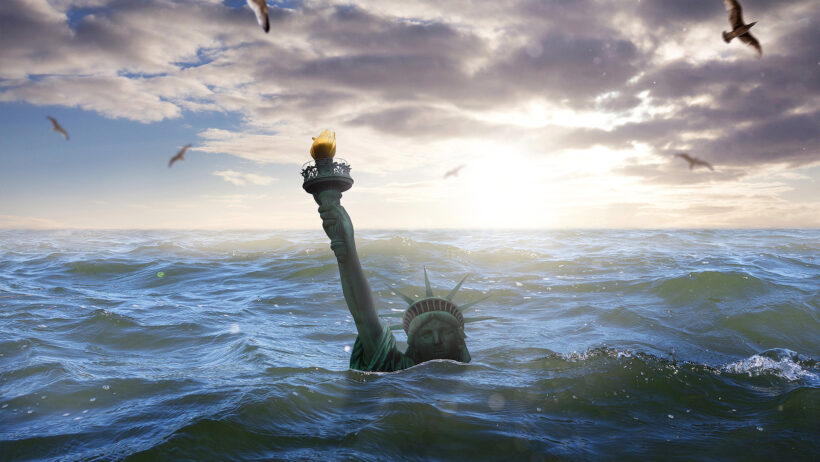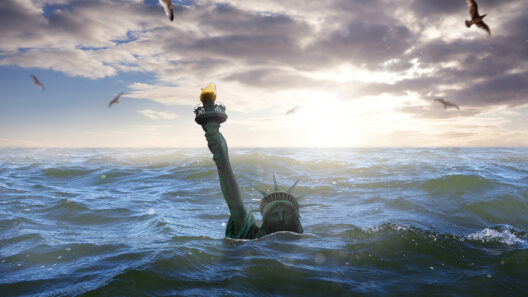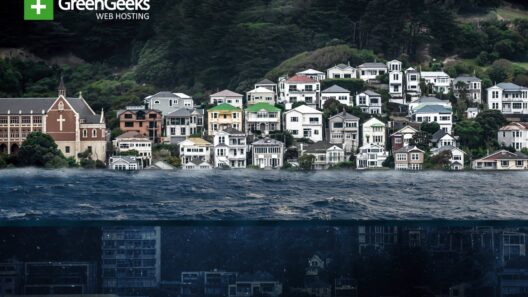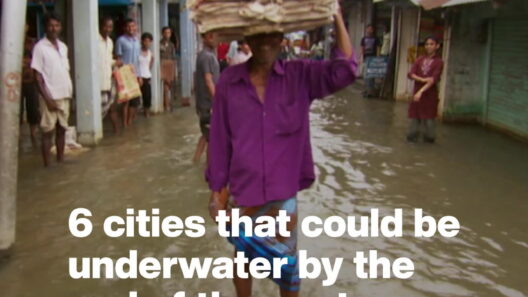As climate change continues to grip the globe, one of the most alarming manifestations is the rise in sea levels. Numerous countries are experiencing the dire consequences of this phenomenon, leading not only to environmental degradation but also to social and economic upheaval. The world’s oceans are not static; they shift and surge, carving out coastlines, inundating fertile lands, and threatening entire civilizations. In this examination, we unearth the nations bearing the brunt of rising seas and explore their unique vulnerabilities and the aesthetic scars that a rising tide can leave.
Understanding the origins of rising sea levels reveals critical nuances. Primarily attributed to the melting of polar ice caps and glaciers and the thermal expansion of seawater due to increasing temperatures, this predicament is not confined to one geographical sphere. From island nations in the Pacific to densely populated coastal cities globally, the tapestry of regions affected is richly woven with tales of resilience and despair.
The Vulnerable Archipelagos: Small Island States at Risk
Among the most poignant cases are small island nations, where their very existence hangs by a thread. The Maldives, for example, is often cited as a poster child for the plight of low-lying states. This paradise of over 1,000 coral islands is jeopardized by projections suggesting that a rise of merely one meter could submerge large swathes of its territory, displacing its 500,000 citizens and disrupting its vibrant ecosystem.
Then, we have Tuvalu and Kiribati. Both are cases in point that showcase an urgent struggle against the encroaching tides. In Tuvalu, where homegrown agriculture is hindered by saline intrusion, communities are witnessing saltwater infiltrate their freshwater supplies. In Kiribati, the government has even initiated plans to relocate its populace, signaling a daunting new chapter in the narrative of climate displacement.
This heartbreaking reality extends to the Caribbean as well. Nations like Haiti and the Bahamas are at increased risk of storm surges fueled by rising sea levels. The Bahamas, with its picturesque turquoise waters and fragile ecosystems, is forecasted to see extensive land loss in the coming decades. An aesthetic haven today, it faces a dystopian future if current trends remain unchecked.
Coastal Behemoths: The Impacts on Major Cities
Despite being prominent players on the global stage, major cities are not spared from the repercussions of the ocean’s rise. New York, Los Angeles, and Miami—metropolises that glitter and gleam—face grave threats. The disparity between these cities’ inherent economic might and their vulnerability to flooding illustrates a troubling paradox. Miami, for instance, is particularly susceptible to “sunny day flooding,” where tidal waters rise even in clear weather, forcing the city to navigate an increasingly precarious balancing act of maintaining urban infrastructure.
Rising waters aren’t merely a matter of physical contact. Biblical levels of rainfall exacerbate flooding, overwhelming drains and inundating streets even further. The aesthetic allure of Miami’s beaches could transform into a bleak reality marked by the desolation of abandoned coastal properties. Urban adaptation strategies, while underway, often struggle against the magnitude of the threat posed by relentless sea-level encroachments.
Further north, the historic charm of New York City is also under seige. Hurricane Sandy was a wake-up call that laid bare its vulnerability, causing extensive damage and loss of life. The city is now investing heavily in infrastructure designed to combat flooding, a monumental undertaking that blends innovative architecture with the urgent need for protection. The juxtaposition of its iconic skyline against an ever-rising sea evokes both admiration and foreboding.
Ecosystems in Peril: A Larger Ecological Impact
A rising tide doesn’t simply threaten human habitations; it wreaks havoc on terrestrial and marine ecosystems as well. Coastal wetlands, which serve as crucial buffers against storm surges and habitat sanctuaries for countless species, are under siege as saltwater transgresses into freshwater habitats. The disappearance of these wetlands is an ecological tragedy unfolding silently yet devastatingly.
In the mangrove forests of Bangladesh, the country is grappling with a dual threat—climate displacement and ecosystem loss, both exacerbated by rising waters. The verdant, breathing lungs of the coast are vital for sustaining biodiversity and providing resources for local communities. Yet, as saltwater intrudes, these ecosystems falter, leading to a cascade effect that undermines food security and livelihoods.
The plight of polar regions is no less severe. As ice retreats, not only do sea levels rise, but the delicate balance of these ecosystems is disturbed. The majestic polar bears of the Arctic are losing their hunting grounds, leading to diminished populations and the dire threat of extinction. Each degree of warming brings not just vivid aesthetic changes to these pristine landscapes, but also empathy-swelling narratives that capture the consequences of our actions.
Conclusion: An Urgent Call to Action
As we piece together the impacts of rising sea levels, we face a call to action that demands our attention and commitment. The landscapes and nations we cherish are at stake, urging us to reconsider our practices and policies. It is time to foster dialogue, create solutions, and inspire a collaborative effort to tackle the pressing concerns of our time. To protect these vulnerable nations from the encroaching sea, we must engage in responsible stewardship of our planet. The beauty and integrity of our world depend on our collective resolve to combat climate change and rising sea levels before it is too late.
